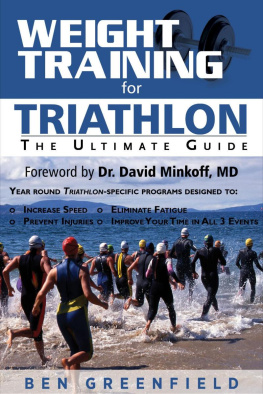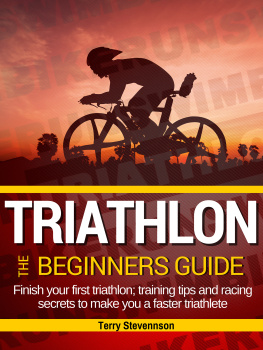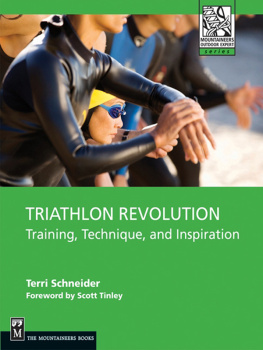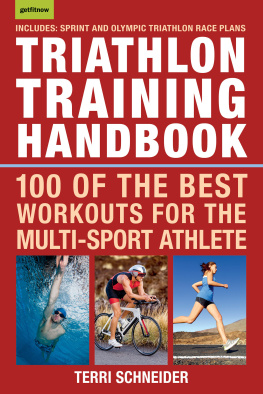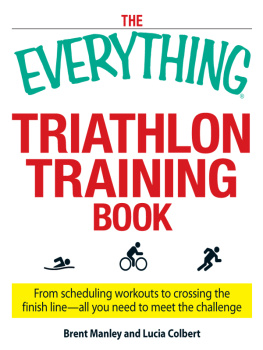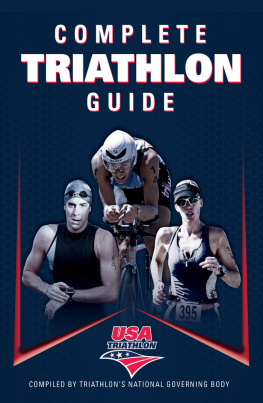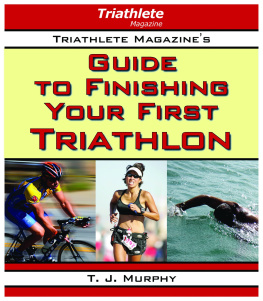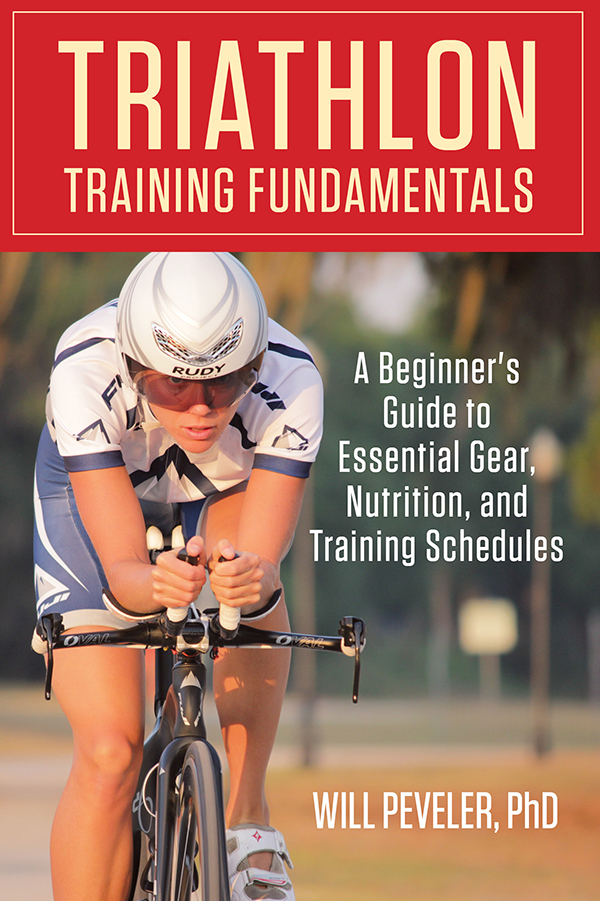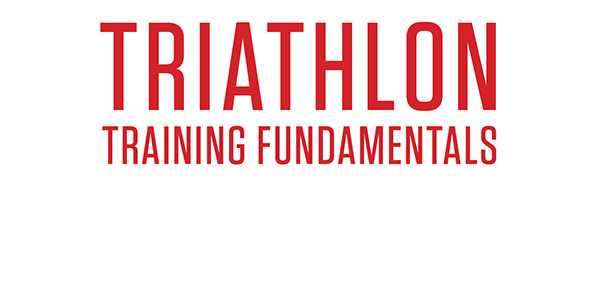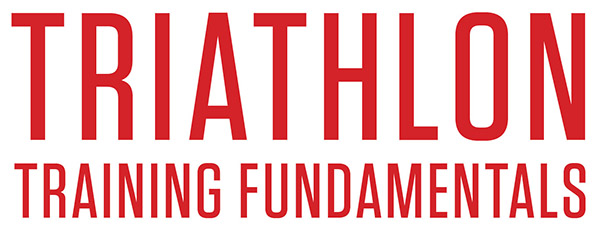A Beginners Guide to Essential Gear, Nutrition, and Training Schedules
Will Peveler
Copyright 2014 by Will Peveler
ALL RIGHTS RESERVED. No part of this book may be reproduced or transmitted in any form by any means, electronic or mechanical, including photocopying and recording, or by any information storage and retrieval system, except as may be expressly permitted in writing from the publisher. Requests for permission should be addressed to Globe Pequot Press, Attn: Rights and Permissions Department, PO Box 480, Guilford, CT 06437.
Lyons Press is an imprint of Globe Pequot Press.
All photos are the authors unless otherwise noted.
Text design/layout: Mary Ballachino
Project editor: Ellen Urban
Library of Congress Cataloging-in-Publication Data is available on file.
eISBN 978-1-4930-0910-7
Medical Disclaimer:
The programs in this book are designed for athletes with either a healthy-to-high level of fitness or the physiology to attain a healthy-to-high level of fitness. Readers should consult a physician before beginning any of the programs or workouts suggested herein. If you experience any pain or difficulty with these exercises, stop and consult your healthcare provider.
I dedicate this book to Grayson and Garrett, two of the best sons a father could ever hope for.
Contents
Acknowledgments
I would like to thank all of those who have educated, mentored, and put up with me through my educational years. I would like to specifically acknowledge: Dr. Phil Bishop, Dr. Matt Green, Dr. Mark Richardson, Dr. Frank Wyatt, Dr. Thad Crews, and Dr. Joe Smith. The guidance and friendship I have received from these individuals and others have been invaluable.
I would also like to thank those who have provided photos for the book: Cannondale, Advanced Sport International, Profile Design, Polar, Vasa, Hammer Nutrition, Rudy Project, Aqua Sphere, Nathan Kortuem, and Milay Galvez. I would also like to thank those who allowed me to photograph them for the book: Samantha Brey, Kayla Wright, Quinton Dunn, Gabe Sanders, Scott Brock, Raymond Gardinier, Josh Volpenhein, and Connie Vaughn.
Last but not least, I would like to thank all those at Globe Pequot Press who have worked hard to make this book a success. I would like to especially thank Katie Benoit and Ellen Urban.
The sport of triathlon has grown exponentially during the last ten years.
Introduction
Throughout my career, both as a competing triathlete and a collegiate cycling and triathlon coach, I have spent a lot of time answering questions regarding training for triathlons. This book, written with the beginning athlete in mind, is an attempt to answer all of those questions in an easy-to-use and straightforward manner. In short, this book contains all of the information that I wish I had known prior to my first triathlon.
Sport of Triathlon
Triathlons are relatively new. The first US triathlon was held in 1974, and it was not until the 2000 Olympics that the triathlon was introduced as an Olympic sport. The popularity of the sport has grown exponentially. Today triathlons consist of a swim followed by a bike ride and finished off with a run.
People become involved in the sport of triathlon for a variety of reasons, but mainly for the challenge and the resultant feeling of accomplishment that comes from completing that first race. Theres also a national increase in awareness of the positive impact of physical activity on health and aging, which results in people becoming more active and looking for alternate and challenging methods of exercise. And some triathletes get involved to give back to the community through charitable organizations. Regardless of the rationale, one truth is universal: Once you complete the race, you are a triathlete for life.
Challenge and Competition
Many people become involved in triathlon because of the physical and mental challenge that the sport provides. It allows you to push your perceived limits to discover what you are made of and what you can accomplish. For many, just completing a triathlon is a challenge in and of itself and reward enough. For others, the drive is the competition, competing against fellow athletes to determine who is faster.
But to be a triathlete, all you have to do is finish in the allotted amount of time. One of the unique aspects of triathlon is that it is an individual sport. This allows individuals of varying ages and fitness levels to become involved. You can train in all three disciplines at your own pace and on your own schedule (although it is always fun to train and race with friends!).
Health
Improved health is a great motivator for triathletes, many of whom become involved in triathlon during their pursuit of a healthier lifestyle. Individuals who are physically active are four times less likely to develop cardiovascular disease than those who do not participate in regular physical activity. This fact is so strongly supported by available research that the American College of Sports Medicine recently implemented the Exercise Is Medicine initiative, which is officially supported by the surgeon general and USA Triathlon.
Triathlon provides a challenging but attainable goal for those who wish to get in shape for health or personal reasons. To maximize the health benefits of exercise, 30 minutes of physical activity per day is recommended for most days of the week. During triathlon training you will exceed those minimum recommendations and be well on your way to the development of a lifelong healthy lifestyle.
While cardiovascular activity has a strong positive impact on your health, you need to first ensure that you are healthy enough to begin an exercise program with no restrictions. Exercise takes your body out of homeostasis (the maintenance of balance within the human body: body temperature, blood glucose levels, etc.) and therefore increases the risk of a cardiovascular incident in those with undiagnosed or unknown heart conditions. You should seek a physicians clearance prior to beginning an exercise program in order to confirm that you are healthy enough to begin. This is especially true for sedentary individuals, older individuals, those that have not had a recent physical, and those that possess risk factors for the development of cardiovascular disease or signs of cardiovascular disease.
Charity Events
Some individuals become involved in triathlons in order to raise money for specific causes or organizations. The Wounded Warrior Project works with triathlon race directors to raise money for wounded veterans coming home from war. As a war veteran I feel very strongly about this organization. The Leukemia and Lymphoma Societys Team in Training helps prepare you for your first triathlon by providing coaching and motivation throughout training, while also raising money to support cancer research. I have previously worked as a Team in Training coach, and it is a very rewarding experience.


